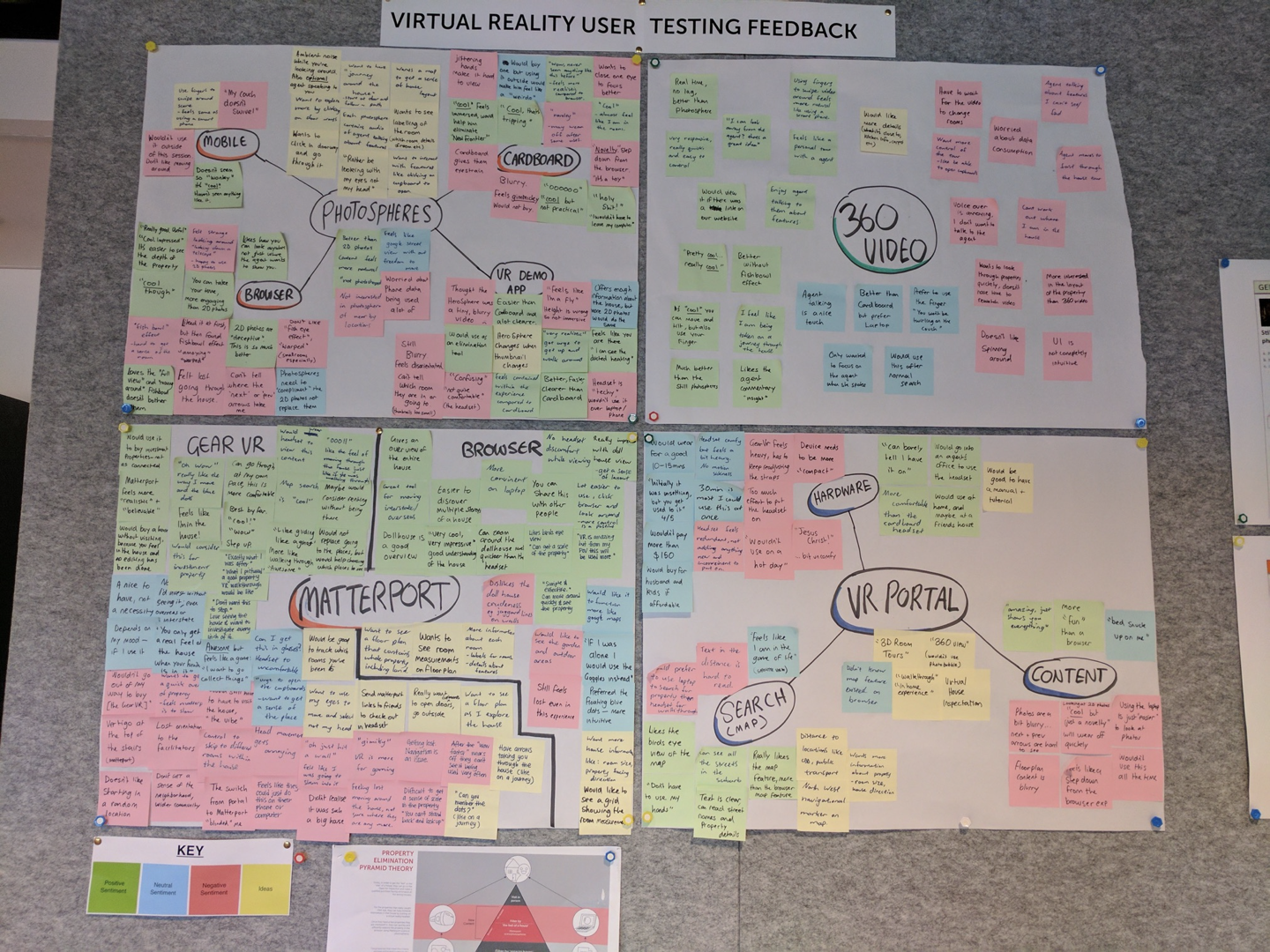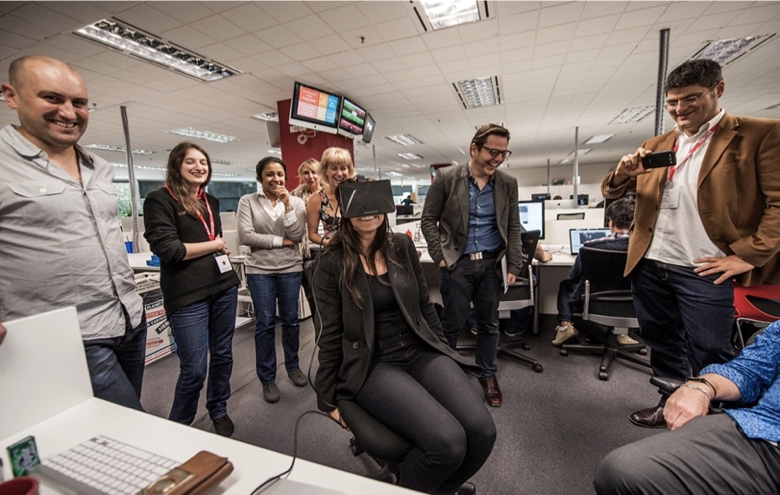Gear VR vs Browser
Agents loved the immersion of Gear VR but wanted the reliability of simple browser viewers. We built both, letting them swap instantly.
realestateVR
This is how we took the Australian property experience into Oculus DK1 demos, HTC Vive show booths, and finally Google Daydream headsets.



Timeline
VR only lands when it feels familiar, informative, and lightweight. We mirrored the portal, exposed agent data, and gave people multiple hardware options so they could test without nausea.
Return to lab timelineUser research wall
Every square on that board translated to a backlog item—here are the big themes we carried forward.
Agents loved the immersion of Gear VR but wanted the reliability of simple browser viewers. We built both, letting them swap instantly.
Users hated being dropped into low-res spheres. That feedback led us to prioritise Matterport-quality scans and better loading states.
People wanted the same context they had on realestate.com.au – price, agent, and inspection info – so the VR portal mirrored the site UI.